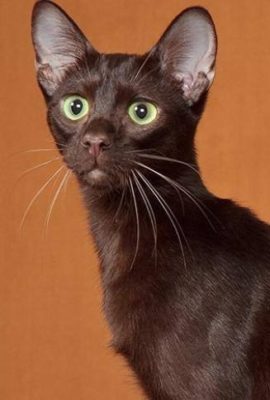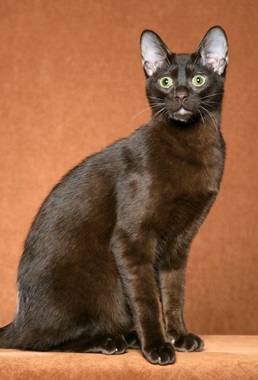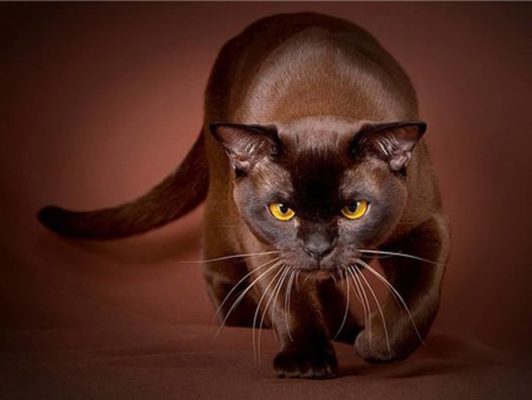Havana Brown
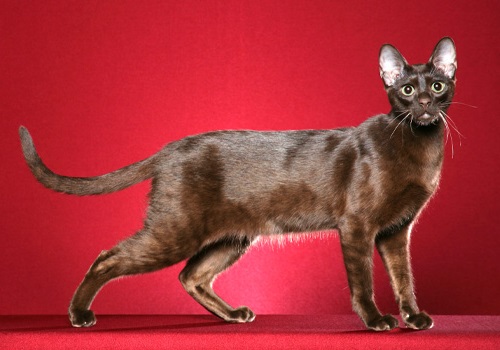
Havana Brown has not only an unusual appearance but also a high level of intelligence. This pet is sure to surprise you. Havana is intelligent and active. With other pets, it is easy to get along in the same territory. He loves to frolic and will keep your child company. At all aggressive and not distinguished by independence. On the contrary, he loves to get attention and affection from the owner.
Table of Contents
Breed Information
| Origin | United Kingdom |
| Size | Males 25-30 cm Females 23-25 cm |
| Weight | Males 3.5-4.5 kg Females 2.5-3.5 kg |
| Fur Type | Short-haired |
| Color | Chocolate, mauve |
| Lifestyle | Indoors |
| Lifespan | 10-15 years |
| FIFe Classification | – |
| WCF Classification | – |
| TICA Classification | HB |
| Group | Short-haired cats |
| Price | $600-1200 |
Breed Photos
Origin History
The first mention of the breed dates back to 1350. At that time, the first manuscript was written in Ayutthaya, and it was called “The Book of Poems about Cats”. It contained a detailed description of some beautiful brown cats. The locals believed that these cats could protect their homes from evil forces.
In the early nineteenth century, brown solid color cats and Siamese point cats were brought to Britain. In 1894 a detailed description of the breed was published. The cats were described as Siamese but with “a coat of polished chestnut with greenish-blue eyes”. For a long time, the breed struggled for public acceptance. The British Amateur Siamese Cat Club made a statement in 1920 that it did not encourage breeding the breed at all. This decision was made because of the greenish hue of the cats’ eyes.
In 1952 the newborn kitten of the breed was named “Bronze Idol”. A little later, British breeders led by Miranda von Ullmann took up the breed population. She decided to cross a black Domestic Shorthair cat with a Siamese Chocolate Point and a Russian Blue Siamese. For some time, the name “Havana Brown” was used to refer to the breed. Havana did not get its modern name until 1960.
In Europe and one of the cat registries in the United States, the Havana Brown is known simply as the Havana. Havana is considered a historical name, and the word “brown” refers to the traditional inherent color of the breed. Unfortunately, Havana is considered one of the rarest cat breeds and is nearing extinction.
Appearance
Representatives of the Havana Brown breed are graceful and memorable cats. The physique is muscular but slender and elegant. The body is rectangular and slim in shape. The main feature of the appearance of Havana is considered the head. It is triangular with an elongated square chin. The muzzle looks unique, shaped like an ear of corn. The ears are quite close to the eyes, elongated and large. The eyes are medium-sized, oval shaped with a brilliant look. The eyes of members of the breed are clear green in color.
The limbs are strong and dry. The tail is of medium length, well-proportioned, and evenly tapered toward the end. The coat is short and shiny. The color of the coat must necessarily be uniform and rich brown. Most cat associations only recognize the Havana of chocolate color. Lilac color is recognized by TICA but is not recognized by CFA.
Character
Havana Brown has not only an unusual appearance but also a high level of intelligence. This pet is sure to surprise you. Havana is intelligent and active. With other pets, it is easy to get along in the same territory. He loves to frolic and will keep your child company. At all aggressive and not distinguished by independence. On the contrary, he loves to get attention and affection from the owner.
It tends to meow frequently, thus showing its interest in you. Keep in mind that Havana can jump high and is very hardy. Therefore, you should remove from cabinets and nightstands all breakable objects.
Care
The smooth and short coat of a Havana Brown requires minimal care. It is not recommended to bathe your pet often – it will only spoil the coat’s structure and deprive it of softness and shine. Bathe Havana no more than once in several months. It is advisable to comb the pet with a brush with rubber bristles twice a week.
Otherwise, follow standard hygiene guidelines to keep your pet looking healthy. Nails should be trimmed, teeth brushed, and ears and eyes cleaned every two weeks.
Education
An obedient cat is always the result of an adequate and trusting relationship with its owner. Havana Brown is very attentive to its owner and listens to all his requests. The responsiveness and inquisitiveness of the pet will help you in his education.
The Havana Brown is easy to get to know and interest you. Also, the breed is completely trouble-free, which means it will never ruin your furniture. Owners note Havana’s good trainability, especially in the habituation to the litter box and leash.
Common Diseases
Since the ancestors of Siamese cats are considered Siamese cats, they have a similar tendency to some diseases. Unfortunately, without proper care, Havanas are susceptible to such diseases:
- obesity;
- diabetes mellitus;
- upper respiratory tract infections;
- cardiomyopathy;
- diseases of the lower urinary tract;
- allergic reactions;
- atopic dermatitis;
- gingivitis and periodontitis.
Nutrition
Havana’s diet must be balanced, and feeding must be regular. Because they tend to be allergic and overweight, you should look at ready-to-eat food. Dry food usually takes into account protein, fat, and carbohydrate rates. Also, hypoallergenic premium food contains all the vitamins needed for normal pet bone formation.
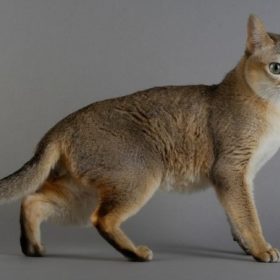 Singapura
Singapura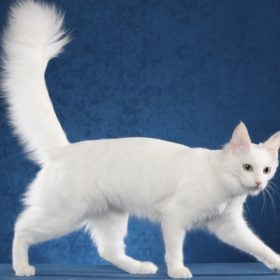 Turkish Angora
Turkish Angora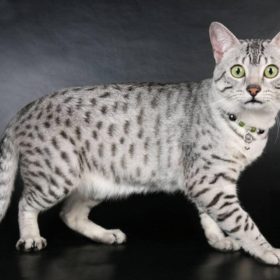 Arabian Mau
Arabian Mau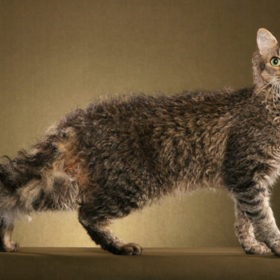 LaPerm Shorthair
LaPerm Shorthair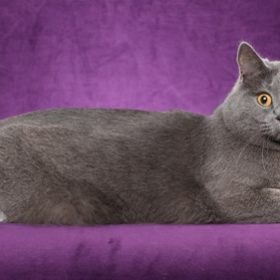 Chartreux
Chartreux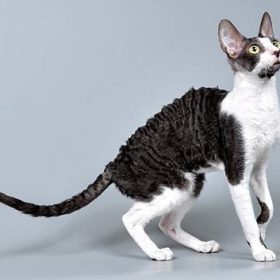 Oregon Rex
Oregon Rex